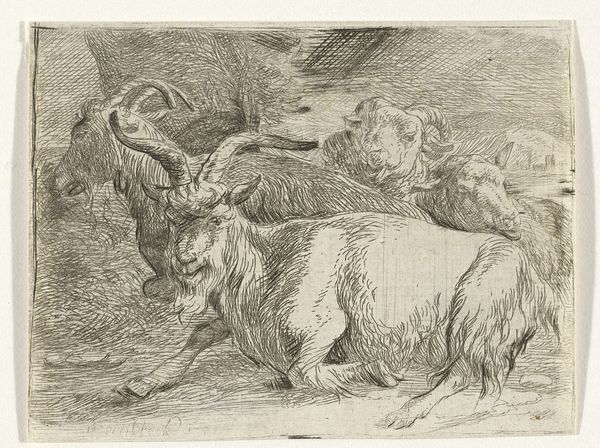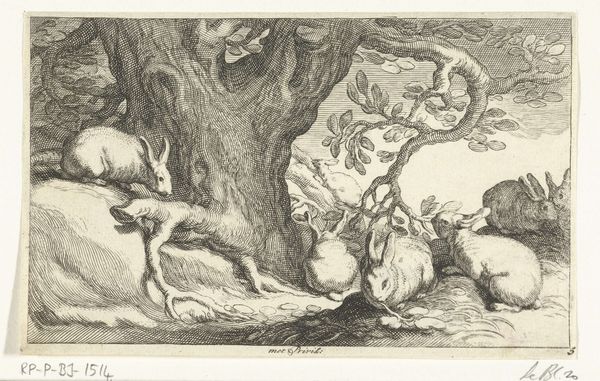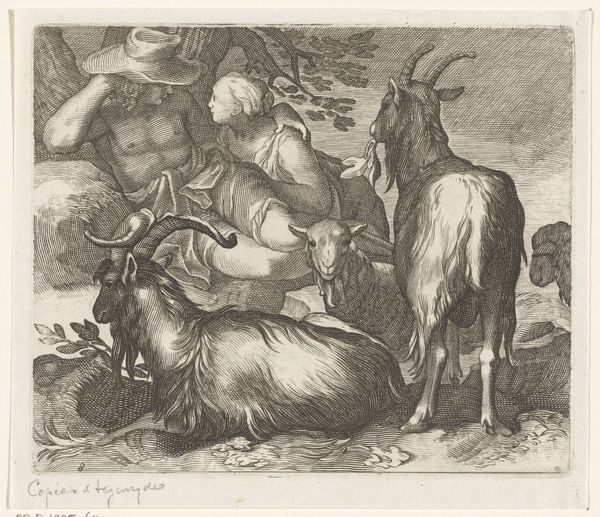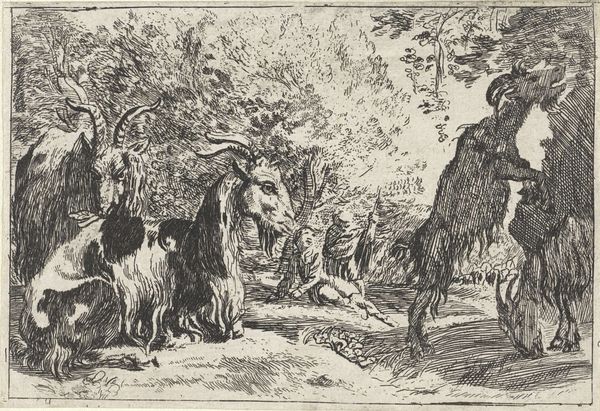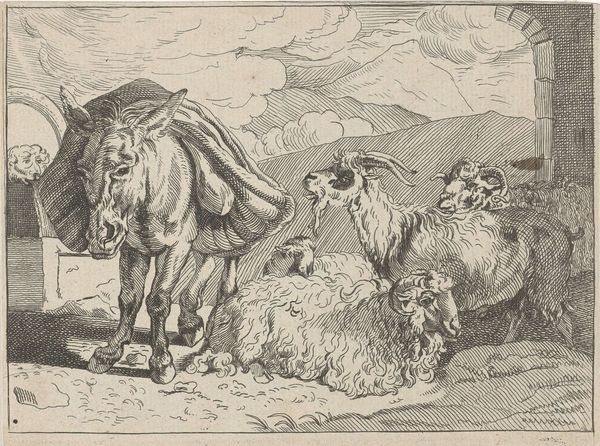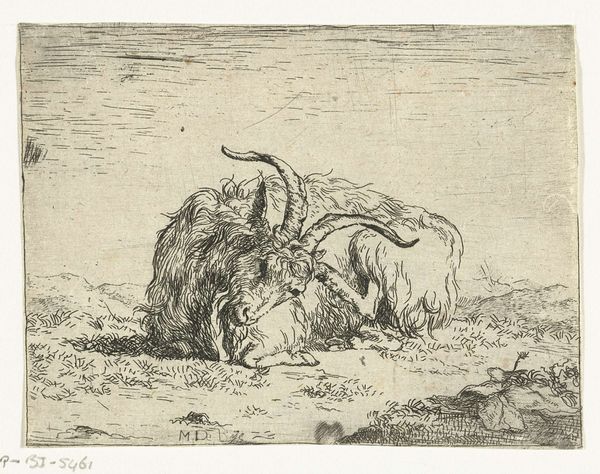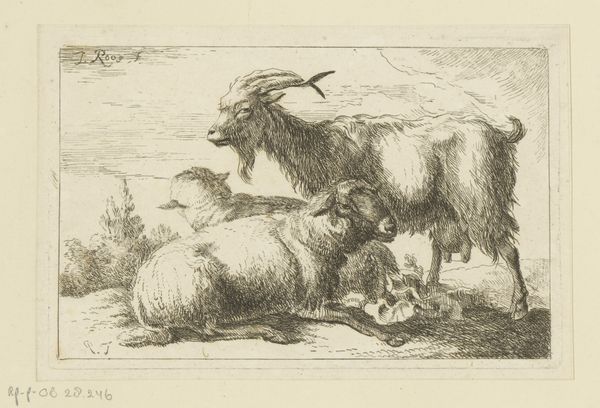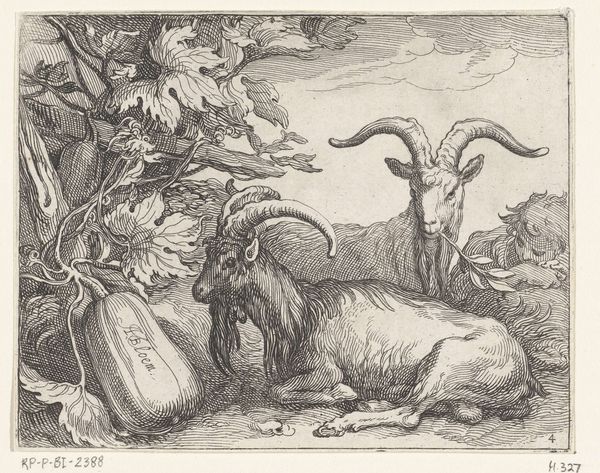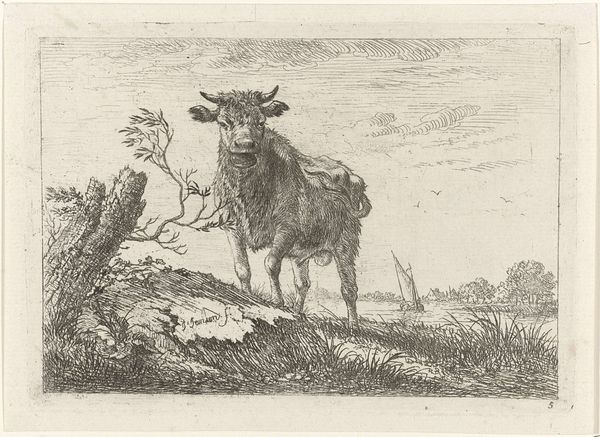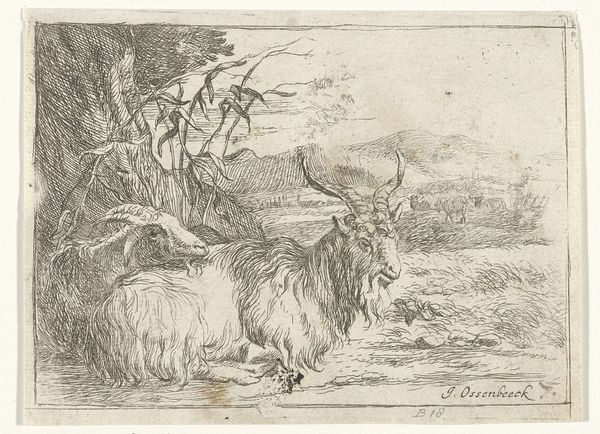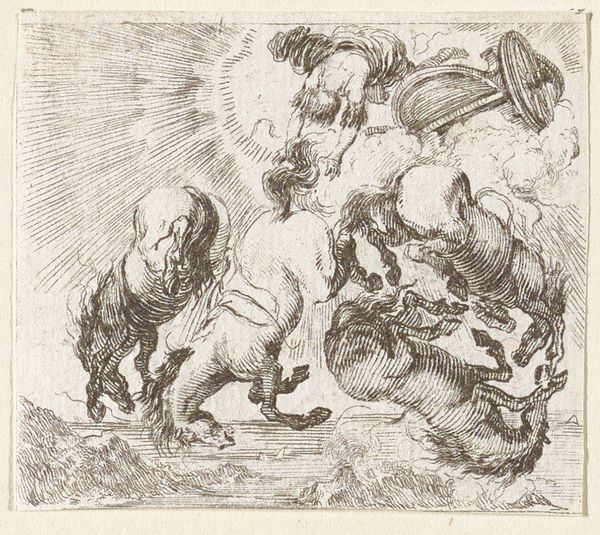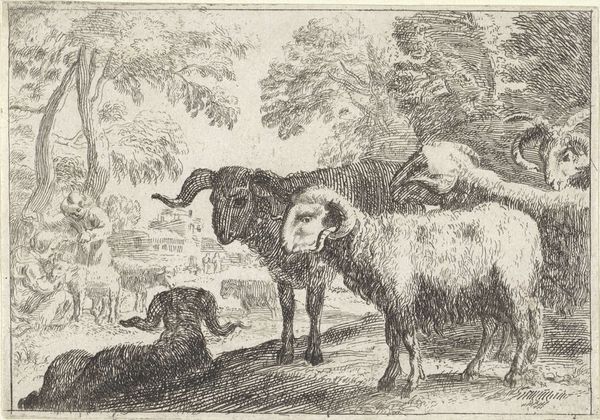
drawing, etching
#
drawing
#
animal
#
dutch-golden-age
#
etching
#
landscape
#
genre-painting
#
realism
Dimensions: height 75 mm, width 100 mm
Copyright: Rijks Museum: Open Domain
Jan van Ossenbeeck created this miniature print, "Two Goats and Two Sheep," using etching, a printmaking technique involving acid. The artist likely coated a copper plate with wax, drew his composition through it, and then submerged the plate in acid, which bit into the exposed lines. By repeatedly immersing and stopping out areas, he achieved varying depths and textures. The process is particularly evident in the rendering of the animals’ fleeces, where dense hatching creates a palpable sense of volume. Ossenbeeck's mastery lies in manipulating line to suggest form and surface. While etching was considered a fine art, it also facilitated the mass production of images, catering to a growing market for accessible art. The labor-intensive technique, demanding skilled draftsmanship and chemical expertise, underscores the intricate relationship between artistic expression and the economics of image-making in the 17th century. It’s a good reminder that even works on paper have a crucial relationship to materiality, making, and context.
Comments
No comments
Be the first to comment and join the conversation on the ultimate creative platform.
